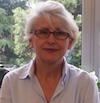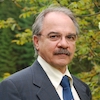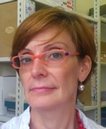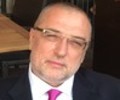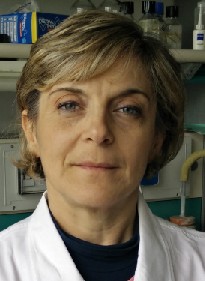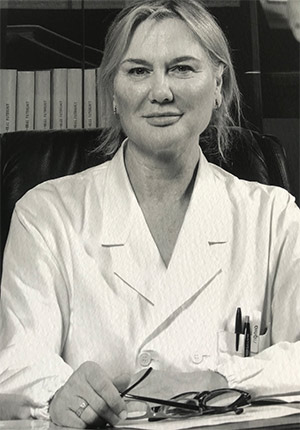Studying at the University of Verona
Here you can find information on the organisational aspects of the Programme, lecture timetables, learning activities and useful contact details for your time at the University, from enrolment to graduation.
Academic calendar
The academic calendar shows the deadlines and scheduled events that are relevant to students, teaching and technical-administrative staff of the University. Public holidays and University closures are also indicated. The academic year normally begins on 1 October each year and ends on 30 September of the following year.
Course calendar
The Academic Calendar sets out the degree programme lecture and exam timetables, as well as the relevant university closure dates..
| Period | From | To |
|---|---|---|
| CLID ROV 1 ANNO 1 SEM | Oct 2, 2017 | Dec 15, 2017 |
| CLID ROV 2 ANNO 1 SEM | Oct 2, 2017 | Dec 15, 2017 |
| CLID ROV 3 ANNO 1 SEM | Oct 2, 2017 | Dec 15, 2017 |
| CLID ROV 3 ANNO 2 SEM | Mar 5, 2018 | Apr 30, 2018 |
| CLID ROV 2 ANNO 2 SEM | Mar 5, 2018 | Apr 30, 2018 |
| CLID ROV 1 ANNO 2 SEM | Mar 5, 2018 | Apr 30, 2018 |
Exam calendar
Exam dates and rounds are managed by the relevant Medicine Teaching and Student Services Unit.
To view all the exam sessions available, please use the Exam dashboard on ESSE3.
If you forgot your login details or have problems logging in, please contact the relevant IT HelpDesk, or check the login details recovery web page.
Should you have any doubts or questions, please check the Enrollment FAQs
Academic staff
 renzo.antolini@unitn.it
renzo.antolini@unitn.it
 martina.bonetti@apss.tn.it
martina.bonetti@apss.tn.it
 borghesi.a@mail.apss.tn.it
borghesi.a@mail.apss.tn.it
 elenacampanaro@libero.it
elenacampanaro@libero.it
 fulviocampolongo@gmail.com
fulviocampolongo@gmail.com
 francesca.fontana@univr.it
francesca.fontana@univr.it
 grisenti@science.unitn.it
grisenti@science.unitn.it
 renata.lazzeri@apss.tn.it
renata.lazzeri@apss.tn.it
 loredana.pancheri@univr.it
loredana.pancheri@univr.it
Study Plan
The Study Plan includes all modules, teaching and learning activities that each student will need to undertake during their time at the University.
Please select your Study Plan based on your enrollment year.
1° Year
| Modules | Credits | TAF | SSD |
|---|
2° Year activated in the A.Y. 2018/2019
| Modules | Credits | TAF | SSD |
|---|
3° Year activated in the A.Y. 2019/2020
| Modules | Credits | TAF | SSD |
|---|
| Modules | Credits | TAF | SSD |
|---|
| Modules | Credits | TAF | SSD |
|---|
| Modules | Credits | TAF | SSD |
|---|
Legend | Type of training activity (TTA)
TAF (Type of Educational Activity) All courses and activities are classified into different types of educational activities, indicated by a letter.
Biomolecular fondamentals of life (2017/2018)
Teaching code
4S000089
Credits
4
Coordinator
Language
Italian
Location
ROVERETO
Also offered in courses:
- Biomolecular fondamentals of life - BIOLOGIA APPLICATA E GENETICA of the course Bachelor's degree in Psychiatric Rehabilitation Techniques
- Propaedeutic physical and biological sciences - BIOLOGIA APPLICATA of the course Bachelor's degree in Physiotherapy
The teaching is organized as follows:
Learning outcomes
The whole Course aims to provide basic knowledge of biochemistry, cell biology and human genetics, preparatory for further advanced topics. Teaching is intended to provide:
- basic knowledge of general and organic chemistry preparatory for biochemistry
- structure-function relationship of the most important biological macromolecules and of the metabolic regulation at the molecular level
- cross-talk between the different biochemical pathways and the energy level changes associated
- structural, functional and molecular characteristics of living organisms, in an evolutionary view
- knowledge of the fundamental concepts of genetics and transmission of hereditary characters in humans
At the end of the Course, students should demonstrate to have acquired the knowledge necessary for a critical analysis of the biochemical processes of life in order to be autonomous in the evaluation of the mentioned processes. Students should also demonstrate to have acquired the knowledge of basic mechanisms which regulate intra/intercellular activities, cellular interactions and reproduction, and cause mutations. They should also demonstrate to be familiar with Mendelian genetics and particularly with pathologic traits in humans. Moreover, students should demonstrate their capability to expose reasoning in a critical and precise manner using appropriate scientific terms.
Program
------------------------
MM: BIOCHIMICA
------------------------
PREPARATORY CHEMISTRY (several notions are included in the basic knowledge required). 1. Atomic structure and periodic properties of the elements: matter composition, atom, atomic particles; atomic theory; quantum numbers, and orbitals; electronic configuration, periodic table and chemical reactivity of the elements; electronic affinity, electronegativity. 2. The chemical bond: molecules and ions; ionic and covalent bond; intermolecular forces; hydrogen bond. 3. Solutions and acid-base reactions: concentration of the solutions, acid-base theories of Arrhenius and Brőnsted-Lowry; hydracids, hydroxides, oxyacids; acid-base reactions; pH and buffer solutions. 4. Organic chemistry notions: carbon atom properties; hybrid orbitals; organic compounds classification: functional groups; hydrocarbons; alcohols, ethers, thiols, amines, aldehydes and ketones; carboxylic acids, esters, anhydrides. BIOCHEMISTRY 1. Constitutive elements of the living matter: polymeric structure of the biological macromolecules. 2. Protein structure and function: aminoacid classification, buffering power, peptide bond, levels of protein structure; fibrous and globular proteins; hemoglobin and myoglobin: structure, function, factors influencing the oxygen bond; hemoglobin variants; enzymes: classification, role in the chemical reactions, regulation of the enzymatic activity. 3. Vitamins: hydro- and lypo-soluble vitamins; co-enzymes. 4. Bio-energetics: metabolism; chemical transformations in the cell; spontaneous and non-spontaneous reactions of the metabolic reactions; ATP as “energy exchange coin”; biologically relevant redox reactions. 5. Carbohydrates structure and metabolism: mono- and disaccharides; polysaccharides; glycoconjugates; glycolysis and its regulation; gluconeogenesis; hints of the penthose phosphate pathway; synthesis of the glycogen. 6. Citric acid cycle and oxidative phosphorylation: mitochondria; acetyl-CoA synthesis; citric acid cycle control; respiratory chain and electron transport; ATP synthesis. 7. Lipids structure and metabolism: structural lipids and biological membranes; cholesterol; stock-reserve lipids; lipids digestion and fatty acid β-oxydation; keton bodies formation; hints of fatty acids biosynthesis. 8. Aminoacid metabolism: hints of gluco- and keto-forming aminoacids; transamination and oxidative deamination; the urea cycle. Frontal teaching is the exclusive method adopted in this Course.
------------------------
MM: BIOLOGIA APPLICATA
------------------------
• Characteristics of the living beings • Chemistry of living organisms and biological molecules • prokaryotic and eukaryotic cell: organization of the cell; internal membranes and compartmentalization; organelles, characteristics and functions: nucleus, ribosomes, RER, REL, Golgi, lysosomes, peroxisomes, cytoskeleton, cell wall, extracellular matrix. Animal and plant cells. Mitochondria and plastids (chloroplasts, amyloplasts, chromoplasts) and endosymbiont theory. • Biological membranes: structure and proposed models; passage of materials across cell membranes: passive transport (facilitated diffusion and simple), osmosis, directly and indirectly active transport, co-transport. Exocytosis and endocytosis. Anchoring, tight and gap cell junctions in animal and plant cells. • Cell communication: types of cellular communication: endocrine, paracrine, autocrine and iuxtacrine. Sending and receiving the signal. • Organization of DNA in chromosomes, mitosis and meiosis. DNA and proteins, nucleosomes, heterochromatin, euchromatin, chromosome condensation. The cell cycle and its regulation. Mitosis, meiosis and sexual reproduction • DNA and its role in heredity. DNA structure and replication. • Gene expression: transcription, genetic code and translation. Gene definition. • DNA mutations and mutagenesis • Hereditary character transmission and Mendel’s laws; definition of phenotype, genotype, locus, gene, dominant and recessive allele, homozygosity and heterozygosity. Segregation and independent assortment. Independence and association. Crossing-over and recombination. Genetic determination of sex. Gene interactions. Incomplete dominance, condominance, multiple alleles, epistasis and polygeny. • The human genome: karyotype analysis and pedigrees; autosomal recessive, autosomal dominant, X-linked diseases. DIDACTIC METHOD Attendance to lessons is mandatory. Teaching methods consist of frontal lessons. In addition to the suggested texts, additional didactic supports are offered on the e-learning platform of the course. Students can make an appointment directly with the teacher every time they need it throughout the academic year, by email. Students are invited to choose a book among those indicated.
Students are invited to choose a textbook of Biochemistry and Biology among those indicated in each module form.
Bibliography
| Author | Title | Publishing house | Year | ISBN | Notes |
|---|---|---|---|---|---|
| Roberti, Antognelli, Bistocchi, Talesa | Biochimica e Biologia per le professioni sanitarie (Edizione 2) | McGraw-Hill | 2013 | ||
| M. Samaja, R. Paroni | Chimica e Biochimica | Piccin | 2016 | ||
| A. Fiecchi, M. Galli Kienle, A. Scala | Chimica e propedeutica biochimica | Edi-Ermes | |||
| Luciano BINAGLIA, Bruno GIARDINA | CHIMICA e PROPEDEUTICA BIOCHIMICA (con CD-ROM) | Ediz. Mc Graw-Hill | |||
| Solomon, Martin, Martin, Berg | Elementi di Biologia (Edizione 7) | EdiSES | 2017 | 978-88-7959-938-2 | |
| Sadava et al. | Elementi di Biologia e genetica | Bologna, Zanichelli | 2014 |
Examination Methods
Goal of the exam for the Course of Biomolecular fondamentals of Life: to verify students' advanced comprehension of the whole program topics and their capability to expose their reasoning in a critical and precise manner using appropriate scientific terms.
6 examination sessions are foreseen in the whole Academic Year: 2 in the Winter Session after the Course ending, 2 in the Summer Session, and 2 in the Autumn session.
Students will undertake both modules (written test made of multiple choice quizzes and open questions) if they have attended at least 75% of the frontal teaching activity of the entire Course; further information about exam organization is available in each module form.
The final mark (/out of 30) will derive from the evaluation of both modules. Students will pass the examination if the overall rating of both modules, based on the weighted average of credits, is greater than or equal to 18/30. Students can retire or refuse the proposed mark.
Students who do not pass both exam modules in the same session will have to take the missing/insufficient module in one of the subsequent sessions, if only within the same Academic Year (that is within the Autumn session). From the next winter session students will need to take both modules.
Career prospects
Module/Programme news
News for students
There you will find information, resources and services useful during your time at the University (Student’s exam record, your study plan on ESSE3, Distance Learning courses, university email account, office forms, administrative procedures, etc.). You can log into MyUnivr with your GIA login details: only in this way will you be able to receive notification of all the notices from your teachers and your secretariat via email and soon also via the Univr app.
Gestione carriere
Orario Lezioni
Documents
| Title | Info File |
|---|---|
|
|
pdf, it, 459 KB, 22/09/23 |
|
|
pdf, it, 513 KB, 26/01/24 |
|
|
pdf, it, 498 KB, 23/02/24 |
|
|
pdf, it, 478 KB, 26/01/24 |
|
|
pdf, it, 1228 KB, 25/01/23 |
|
|
pdf, it, 1453 KB, 07/02/24 |
Graduation
Documents
| Title | Info File |
|---|---|
|
|
pdf, it, 714 KB, 13/11/23 |
Student login and resources
in questa sede verranno pubblicati i calendari delle lezioni

 +39 045 812 4251/4024
+39 045 812 4251/4024


